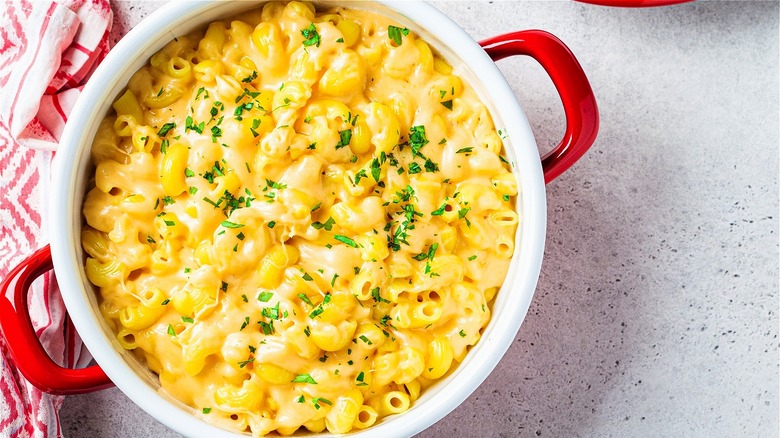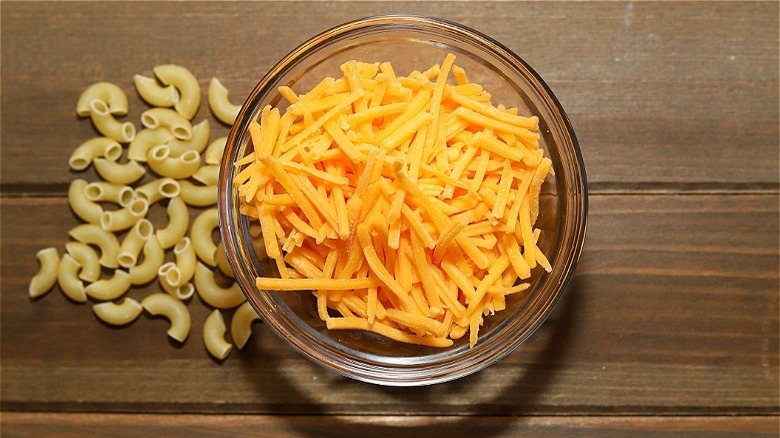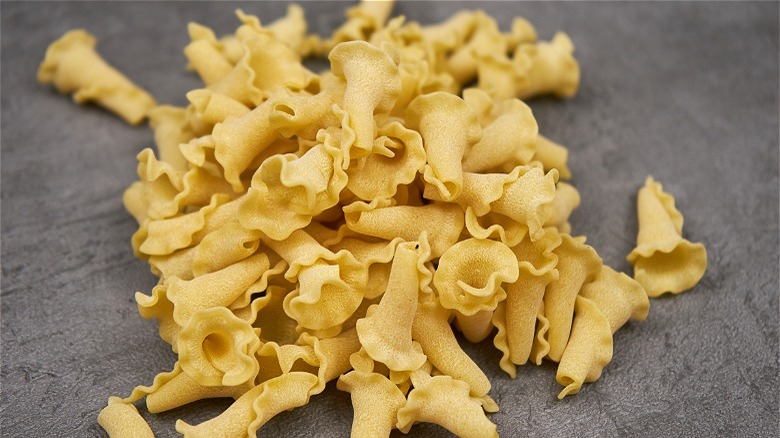The Unique Pasta Shape To Shake Up Your Next Pot Of Mac And Cheese
We may receive a commission on purchases made from links.
There probably aren't many people in the U.S. that haven't heard of or tried traditional macaroni and cheese. While Smithsonian Magazine claims the first written instance of it can be traced back to late 18th century Europe, once Thomas Jefferson brought the idea to America, those creamy and cheesy noodles quickly won the hearts of food lovers across the nation. Kraft debuted a boxed macaroni and cheese in 1937, per Smithsonian Magazine, and the product now remains a low-cost, convenient staple in many households. Statista states in 2020 alone, 13.72 million Americans consumed three to four boxes of Kraft macaroni and cheese in any given month.
When turning to homemade mac and cheese specifically, there are certain ingredients deemed almost necessary in many of the best mac and cheese recipes. Ree Drummond's classic recipe via The Pioneer Woman includes the usual suspects of flour, milk, cheese, salt, pepper, and macaroni. Macaroni may be the standard noodle of choice for homemade mac and cheese, but there are additional pasta shapes that equally capture that creamy cheese sauce in every bite. Before delving into the best pasta alternatives for macaroni and cheese, you first need to make sure you achieve that perfect cheese-sauce ratio.
Crafting a creamy macaroni and cheese at home
Before you pick the right pasta for your baked mac and cheese recipe, crafting the cheese sauce base has to be one of the most important elements. In Chef Alison Roman's guide to making the ideal mac and cheese, per Times Cooking, she stresses the significance behind the sauce. Using enough whole milk and using up to two pounds of cheese for every pound of pasta makes for an ideal texture, according to Roman. Her most important tip is to have the roux-based sauce in the pot runnier than you'd like in the final product. Your homemade mac and cheese should thicken once the noodles are added to the mix.
If you accidentally add too much milk, there are ways to thicken your mac and cheese without compromising the entire dish. MasterClass suggests cooking down the additional liquid over the stove or thickening your base with a small amount of flour and water made into a slurry and then added to the hot milk mixture. You can also add more cheese. After you've perfected your macaroni and cheese sauce, it's time to add the noodles. Beyond macaroni, there is one unique noodle shape you may want to try for your next batch of this creamy cheese-based favorite.
The ideal unexpected pasta shape for homemade mac and cheese
You might not have time to consult the ultimate guide to pasta shapes when cooking up your next pot of mac and cheese, but if you find you're out of elbow macaroni, you're in luck since other pasta shapes work just as well for milk and cheese-based recipes. Culture claims the best noodle types for cheesy dishes range from fusilli or twisted pasta which allows the creamy sauce to get trapped inside the noodle's intricate makeup to shells or lasagna when working with a heavier meat-based sauce.
The one type of noodle you may have never heard of that works just as well as fusilli for macaroni and cheese is campanelle which according to Share the Pasta means "bellflowers" in English and has a unique hollow shape with wavy edges. The Takeout claims campanelle is the perfect pasta type to use for mac and cheese since the rigged edges and thin round shape capture cream-based sauces with ease. Not only that but the little bell-like noodles are a fun way to enhance the everyday predictability of homemade macaroni and cheese. You can use elbow macaroni anytime, but if you're looking for easy ways to dress up one of your favorite dishes, you might want to try a fun new pasta variety.


